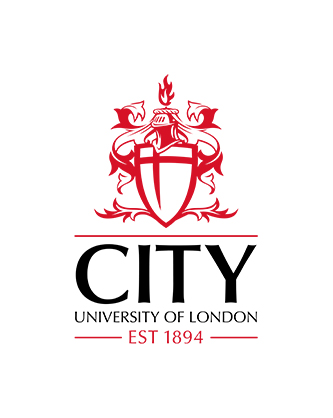The photoyellowing of wool
Russell, S. K. R. (1986). The photoyellowing of wool. (Unpublished Doctoral thesis, The City University)
Abstract
The principal aims of the work were to further the current understanding of the processes, physical and chemical, occurring in wool during irradiation with UV and visible light, and to develop a method of stabilizing the wool fibre to photodegradation.
Investigations of the changes occurring during the photoyellowing of wool were commenced by coating wool with a thin layer of the free-base form of amino acids existing in natural wool, and photoyellowing the samples under 350nm light. This highlighted tryptophan as the prime source of yellowing and rejected the possibility of a synergistic effect existing between two amino acids. It was shown that although all the amino acids in wool absorb light only below 300nm, the fibre was still yellowed by radiation of wavelengths greater than 330nm. Fluorescence work showed the existence of an unidentified species which absorbed at 360nm and fluoresced in the visible region. A comparison was made of the effects of a range of oxidizing agents on wool. Peroxide whitened the fabric and persulphate caused extensive yellowing. Permonosulphate and permanganate were also studied.
The search for a means of inhibiting photoyellowing was successful. Wool was irradiated in the presence of a reducing agent, with a view to reducing the photo oxidation products as soon as they were formed. A range of reagents were tested and it was found that sodium borohydride and zinc formaldehyde sulphoxylate not only prevented yellowing but caused a whitening of the fabric (not seen in the absence of irradiation) and imparted a measure of stability to subsequent irradiation. For several reasons, zinc formaldehyde sulphoxylate was chosen and extensive studies carried out to optimise the conditions. Significantly, this treatment is effective for bleached and optically brightened wool.
Other methods of retardation of wool photoyellowing which were investigated were the application of UV absorbers and radical inhibitors, such as hindered piperidines, diazo-bicyclo-octane and titanium dioxide, chemical modification of the fibre with cross-linking agents and the conversion of cystyl residues to their lanthionyl equivalents. Attempts were made to ’’exhaust” the yellowing capacity of the fibre by repeated alternate yellowing and bleaching. Diffuse reflectance spectroscopy was used to study the effects of wool yellowing and fluorescent whitener de composition in situ on the fibre. This showed that in previous studies where residual FWA had been extracted after photo-yellowing, the results had not given a correct evaluation of the relative stabilities of the FWA's on the wool. Finally, the possibility of developing and applying a stable FWA to wool was studied. Dispersed whitening agents were tested, but with little success.
| Publication Type: | Thesis (Doctoral) |
|---|---|
| Subjects: | Q Science > QD Chemistry T Technology > TT Handicrafts Arts and crafts |
| Departments: | School of Science & Technology School of Science & Technology > School of Science & Technology Doctoral Theses Doctoral Theses |
Download (31MB) | Preview
Export
Downloads
Downloads per month over past year


 Metadata
Metadata Metadata
Metadata